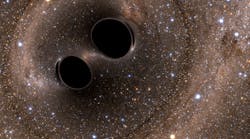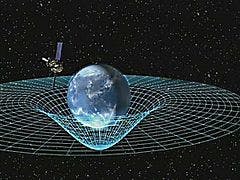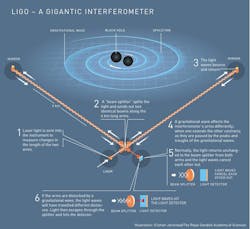Following the breakthrough discovery of gravitational waves in September, 2015 at the Laser Interferometer Gravitational-Wave Observatory (LIGO), Rainer Weiss and Kip S. Thorne, together with Barry C. Barish received the Nobel Prize in Physics 2017. Gravitational waves can be measured using a laser interferometer sophisticated enough to detect ripples in the fabric of spacetime on the scale of angstroms. The ripples are caused by collisions of massive objects in space, and in order to be detectable by instrumentation on Earth, scientists had to perform their measurements on waves generated by colliding black holes.
The discovery confirms Einstein’s theory of General Relativity, which shows warping of the spacetime continuum around massive objects. The stretching and bending of spacetime is a function of the object's gravity. When two massive particles collide, it creates energy that is quantifiable as waves propagating through spacetime. These waves are called gravitational waves.
All massive bodies exert gravity, and warp spacetime to some extent.
The discovery not only confirms Einstein's General Theory of Relativity, but also paves the way for other observatories to build laser interferometers measuring gravitational waves. Gravitational wave detectors will join contemporary instruments that use light and electromagnetic spectra to observe space; it will generate new ways to perceive and measure celestial events, along with universe expansion. Already, LIGO has detected gravitational waves four more times, and other observatories are currently under construction in Japan and India.
The laser-based inferometer at LIGO has to be very big to measure very small changes in the fabric of spacetime in a matter of milliseconds. It uses two identical lasers originating from a single light source that travel 4-km through laser arms in an L-shaped configuration. The lasers travel through a vacuum so that their speed will not be affected by a medium. They are reflected by mirrors at the ends of the laser arms to resonate over the arms' length.
The suspended mirrors and laser arms required a sophisticated design that would only respond to gravitational waves, cancelling out any sources of noise like wind or sound. When the lasers are reflected back to the detector at the convergence of the L, they re-combine. In normal conditions, the lasers are opposite in phase and cancel out one another. But when altered by gravitational waves, one laser arm compresses and the other stretches, causing a phase difference that can measured by an ultra-sensitive detector. For more scientific background, read the following PDF.


